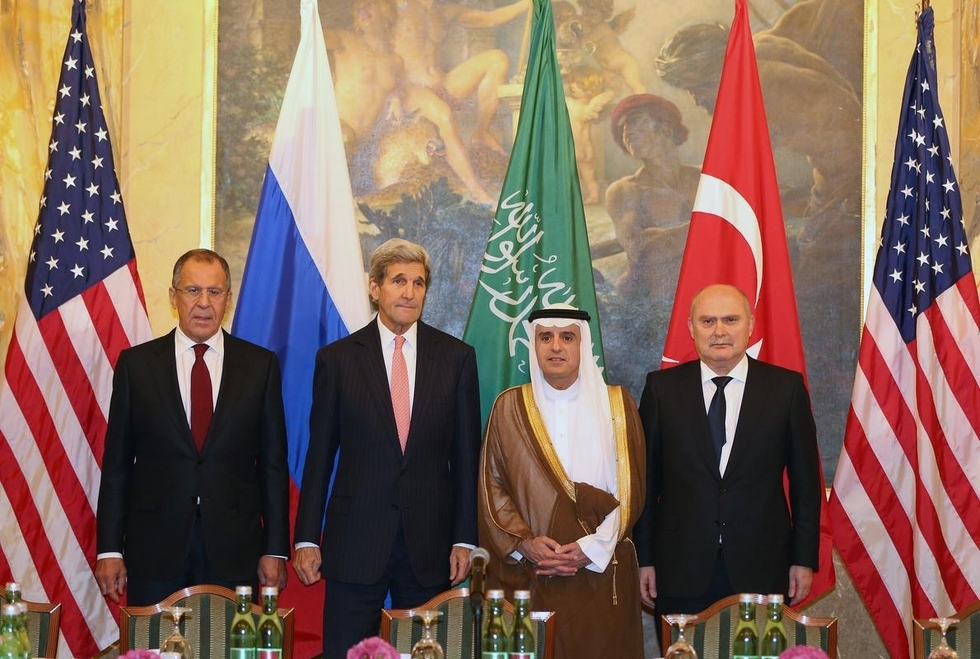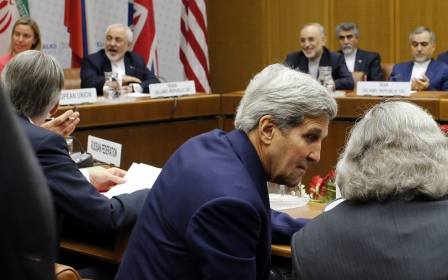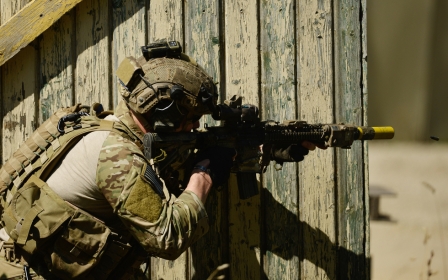The sham Syrian peace conference

I have always been enthusiastic in my support for peace negotiations, which have been neglected all too often in internal and international conflicts. But it is clear that the international conference on Syria that held its first meeting in Vienna on October 30 is a sham conference that is not capable of delivering any peace negotiations, and that the Obama administration knew that perfectly well from the start.
The administration was touting the fact that Iran was invited to participate in the conference, unlike the previous United Nations-sponsored gathering on Syria in January and February 2014. That unfortunate conference had excluded Iran at the insistence of the United States and its Sunni allies, even though several states without the slightest capacity to contribute anything to a peace settlement - as well as the Vatican - were among the 40 non-Syrian invited participants.
Iran’s participation in the Vienna conference represents a positive step. Nevertheless, the conference was marked by an even more fundamental absurdity: none of the Syrian parties to the war were invited. The 2014 talks at least had representatives of the Assad regime and some of the armed opposition. The obvious implication of that decision is that the external patrons of the Syrian parties - especially Russia, Iran and Saudi Arabia - are expected to move toward the outline of a settlement and then use their clout with the clients to force the acceptance of the deal.
The Vietnam model
The idea of leaping over the Syrian parties to the conflict by having an outside power negotiate a peace agreement on behalf of it clients is perfectly logical in the abstract. The classic case of such an arrangement is the US negotiation of the Paris Agreement with the North Vietnamese in January 1973 to end the US war in Vietnam. The US-backed Thieu regime’s total dependence on US assistance and the weight of the US military in Vietnam ensured Thieu’s forced acceptance of the arrangement.
But it should also be noted that arrangement did not end the war. The Thieu regime was unwilling to abide by either a ceasefire or a political settlement, and the war continued for two more years before a major North Vietnamese offensive ended it in 1975.
Even more important in regard to the applicability of the model to the Syrian War is the stark difference between the US interest in negotiating over the head of its Vietnamese client and the Iranian and Russian interests in regard to the Syrian government. The United States was negotiating to get out of a war of choice that it started, like Iraq, in the mistaken belief that its dominant power guaranteed control of the situation and in which it was forced to end by domestic political pressure. Iran, on the other hand, is fighting a war in Syria that it regards a vital to its security. And Russia’s political and security interests in Syria may be less clear-cut, but it also has no incentive to agree to a settlement that would risk a victory for terrorism in Syria.
Eclipse of the 'moderate' opposition
The prospect of delivering the anti-Assad forces in a settlement is even bleaker. If the US-supported opposition forces facing the Syrian regime and its foreign allies had enough power to threaten the regime it might be an objective basis for peace negotiations. The Obama administration has tried to create the impression that the “moderate” forces - meaning those that are willing to work with the United States - are the primary military opposition to the Assad regime. In reality, however, those “moderate” forces have either been absorbed by or have become allied with the jihadists of the al-Nusra Front and its allies.
That dramatic shift in the nature of the armed opposition to Assad was first apparent in September 2013. That was when the three major “moderate” Islamist brigades unexpectedly joined with the allies of al-Nusra Front in opposition to the Syrian National Coalition, which had been formed in Doha in November 2012 under pressure from the United States and its Gulf allies.
The shift toward jihadist domination of the war against the Assad regime accelerated between November 2014 and March 2015 when the Syrian Revolutionaries Front and the Harakat al-Hazm groups, the two main rebel groups which had been getting weapons from the CIA or the Saudis, were attacked and mostly absorbed by al-Nusra Front.
That shift has obvious implications for the possibility of a negotiated settlement. At United Nations envoy Lakhdar Brahimi’s Geneva II conference in January 2014, the only opposition groups at the table were those represented by the US-supported Syrian National Coalition, which no one took seriously as representing any military threat to the regime. Missing from the conference were the self-styled Islamic State and the al-Qaeda franchise in Syria, al-Nusra Front and its allies, which did represent such a threat.
Nusra's hostility to talks
But neither the Islamic State nor the Nusra-Front-led Islamists were interested in the slightest in a peace conference. The military head of the Islamic Front, which is dominated by a close ally of al-Nusra, Ahrar al-Sham, declared that he would consider the participation by any rebel troop in the peace talks as “treason”.
What the Obama administration has said it wants to see emerge from the Vienna conference is a “road map” for a transition in power. The administration has made it clear, moreover, that it wishes to preserve the institutions of the Syrian state, including the Syrian military structure. But both Islamic State and the al-Qaeda-led coalition are sectarian Sunni extremist organisations who have not hidden their intention to replace the Assad regime with an Islamic state that has no vestiges of the existing state apparatus.
The Assad regime obviously has no incentive, therefore, to even hint at any flexibility on the demand for Assad’s departure from Syria, when it knows there is no possibility of any ceasefire or settlement with Islamic State and al-Nusra Front. Similarly, neither the Russians nor the Iranians are likely to force Assad’s hand on the issue merely to negotiate with the weakest element in the armed opposition.
US false narrative on Syria
The Obama administration’s policymakers nevertheless appear determined not to allow unpleasant realities to interfere with its propaganda line on Syria, which is that it is up to Russia and Iran to take care of the problem by somehow wringing concessions from the Assad regime. Secretary of State John Kerry suggested in an interview with Kazak TV channel a few days after the Vienna conference had convened that “the way to end the war is to ask Mr Assad to help with a transition into a new government”. Russia failed to do so, and instead “is there to simply support the Assad regime,” Kerry said, adding that “the opposition will not stop fighting Assad”.
It is doubtful that Kerry mistakes such a patently propagandistic position for the much more intractable Syrian political-military realities. But it is not politically convenient to acknowledge those realities. That would invite unwanted questions about the administration’s decision in 2011 to align its policy with the Syria hawks in Riyadh, Doha and Istanbul who were so bent on regime change in Syria that they were not only indifferent to the jihadist buildup in Syria but saw it as a useful tool for getting rid of Assad.
Now the price of Obama’s fateful political-diplomatic strategy is a sham peace conference that misleads the rest of the world about the lack of any realistic solution to the war.
- Gareth Porter is an independent investigative journalist and winner of the 2012 Gellhorn Prize for journalism. He is the author of the newly published Manufactured Crisis: The Untold Story of the Iran Nuclear Scare.
The views expressed in this article belong to the author and do not necessarily reflect the editorial policy of Middle East Eye.
Photo: United States Secretary of State John Kerry (2nd L), Foreign Minister of Turkey Feridun Sinirlioglu (R), Foreign Minister of Russia Sergei Lavrov (L) and Foreign Minister of Saudi Arabia Adel al-Jubeir (2nd R) pose before a joint meeting in Vienna, Austria on October 29, 2015. (AA)
Middle East Eye propose une couverture et une analyse indépendantes et incomparables du Moyen-Orient, de l’Afrique du Nord et d’autres régions du monde. Pour en savoir plus sur la reprise de ce contenu et les frais qui s’appliquent, veuillez remplir ce formulaire [en anglais]. Pour en savoir plus sur MEE, cliquez ici [en anglais].





